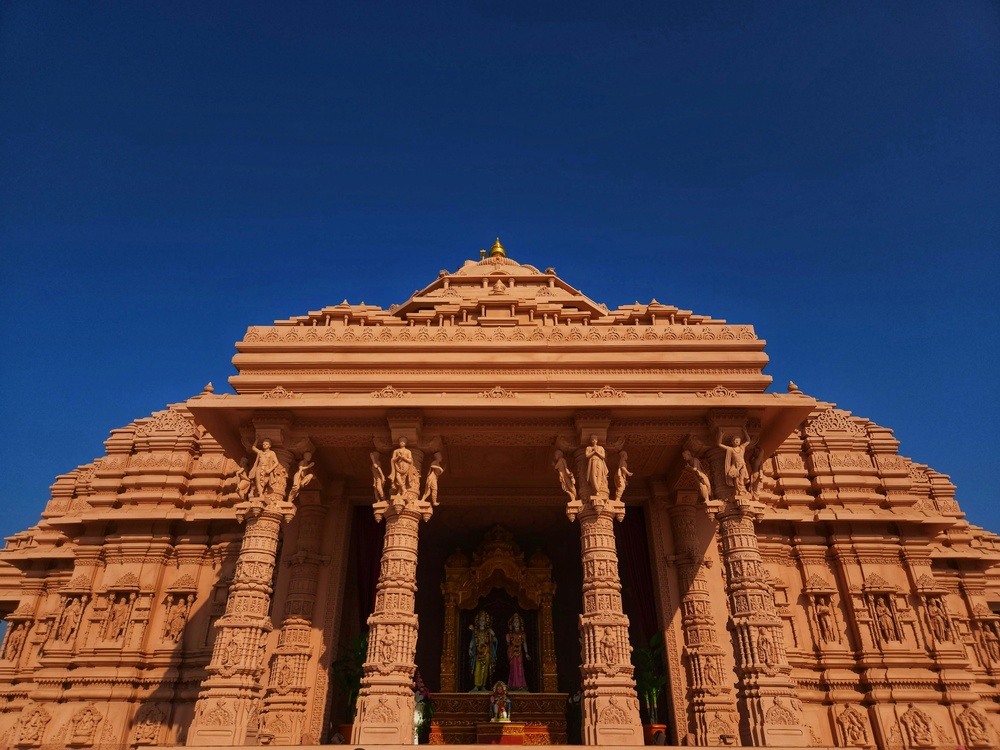Ayodhya, a city steeped in divinity, mythology, and timeless history, is one of India’s most sacred pilgrimage destinations. Revered as the birthplace of Lord Ram, this ancient city is not only significant in religious terms but also offers spiritual depth and cultural richness. Among the many Ayodhya visiting places, Ram Janmabhoomi and Hanuman Garhi stand out as two of the most iconic landmarks. However, the city has much more to offer to travelers seeking spiritual solace and historical discovery.
In this guide, we take you on a journey from the divine birthplace of Lord Ram to the majestic shrine of his most devoted follower, Lord Hanuman—along with other must-visit spots in Ayodhya.
1. Shri Ram Janmabhoomi Temple – The Spiritual Heart of Ayodhya
Ram Janmabhoomi, meaning the birthplace of Lord Ram, is the most sacred and revered site in Ayodhya. The grand temple, under ongoing construction and partially open for devotees, is an architectural marvel representing India’s deep-rooted faith and heritage. Every inch of this temple complex exudes a divine aura, drawing millions of pilgrims from across the globe.
Why Visit: It’s the most important among all Ayodhya visiting places and a once-in-a-lifetime spiritual experience. Attend the early morning aarti for an unforgettable moment of peace and devotion.
2. Hanuman Garhi – The Guardian of Ram’s City
Just a short distance from Ram Janmabhoomi lies Hanuman Garhi, a magnificent hilltop temple dedicated to Lord Hanuman. It is believed that Lord Hanuman lived here and protected Ayodhya after Lord Ram’s return from exile. Visitors must climb 76 steps to reach the shrine, where a beautifully decorated idol of Hanuman resides.
Special Feature: The temple is always buzzing with devotees chanting Hanuman Chalisa, and the view from the top offers a scenic glimpse of Ayodhya city.
3. Kanak Bhawan – The Golden House of Ram and Sita
Located near Hanuman Garhi, Kanak Bhawan is a stunning temple said to have been gifted to Sita by Queen Kaikeyi after her wedding with Lord Ram. The temple houses resplendent idols of Ram and Sita adorned with gold jewelry, hence the name “Golden Palace.”
Don’t Miss: The temple’s intricate architecture and peaceful ambiance make it a photographer’s and pilgrim’s delight.
4. Ram Ki Paidi – Sacred Ghats on the Sarayu River
Ram Ki Paidi is a series of well-maintained ghats along the Sarayu River where pilgrims perform sacred rituals and take holy dips. During festivals like Deepotsav and Ram Navami, this riverfront transforms into a magical space with thousands of diyas (lamps) floating in the water.
Pro Tip: Visit in the evening for the serene aarti and a picturesque sunset view over the river.
5. Treta Ke Thakur – Echoes of the Ashwamedha Yagna
Treta Ke Thakur is a significant temple built on the spot where Lord Ram is believed to have performed the Ashwamedha Yagna. It houses ancient black stone idols of Lord Ram and his brothers. The temple opens to the public only once a year, adding to its mystique and reverence.
Who Will Enjoy: Devotees and those interested in epic stories from the Ramayana.
6. Nageshwarnath Temple – A Legacy of Lord Ram’s Son
Founded by Kush, Lord Ram’s son, Nageshwarnath Temple is one of the oldest temples in Ayodhya. It is dedicated to Lord Shiva and stands as a beautiful example of architectural brilliance and mythological importance.
Best Time to Visit: During Maha Shivaratri, when the temple becomes a vibrant hub of activity and celebration.
7. Guptar Ghat – The Final Journey of Lord Ram
Guptar Ghat holds a special place in Ayodhya’s sacred geography. It is believed to be the site where Lord Ram took jal samadhi (immersion in water to end his earthly life). The peaceful surroundings and spiritual significance make it an ideal spot for meditation and introspection.
Ideal For: Travelers seeking a quiet spiritual experience away from crowds.
8. Tulsi Smarak Bhawan – Honoring the Poet-Saint
This cultural center pays tribute to Goswami Tulsidas, the legendary poet who composed the Ramcharitmanas. The Tulsi Smarak Bhawan includes a library, museum, and a performance hall where Ramayana-themed plays and lectures are regularly conducted.
Must-See: Exhibits of rare manuscripts and live recitations of Ram Katha.
9. Bahü Khundi Temple – Mystery and Myth Combined
Among the lesser-known Ayodhya visiting places, Bahü Khundi Temple is said to contain many tunnels (“khundis”) and holds strong mythological significance. Though smaller in size, it offers a unique experience for history and mythology enthusiasts.
Why Visit: Off-the-beaten-path charm and a sense of exploration.
10. Valmiki Ramayan Bhawan – Celebrating the Sage’s Legacy
Dedicated to Sage Valmiki, the author of the original Ramayana, this spiritual and cultural hub offers visitors a chance to learn about one of the greatest literary works in Indian tradition. It’s a calm, educational, and respectful environment perfect for reflection.
Conclusion
Ayodhya is not just a pilgrimage site—it is a living epic, echoing the tales of Ramayana through its sacred temples, ghats, and spiritual centers. From the divinely charged Ram Janmabhoomi to the powerful shrine of Hanuman Garhi, these Ayodhya visiting places offer something for every kind of traveler—be it devotion, history, or peace.
If you’re planning a spiritual or cultural journey, Ayodhya promises an unforgettable experience steeped in faith and heritage. Let the holy land of Lord Ram lead you through timeless tales and sacred spaces that continue to inspire generations.



















